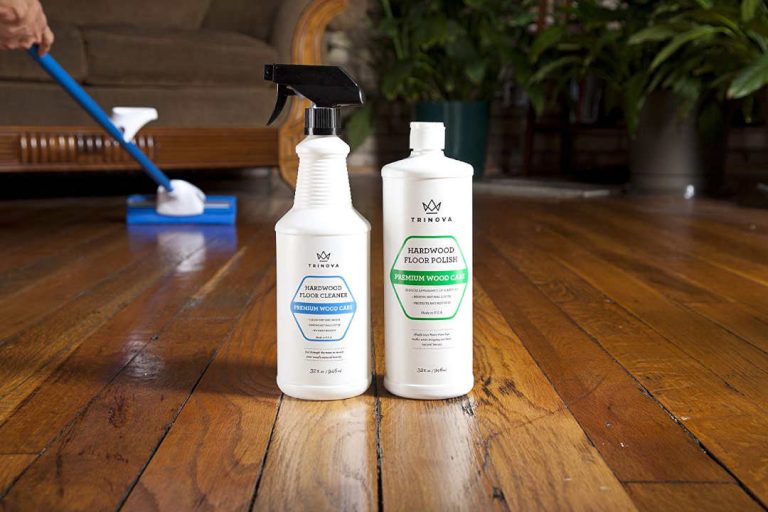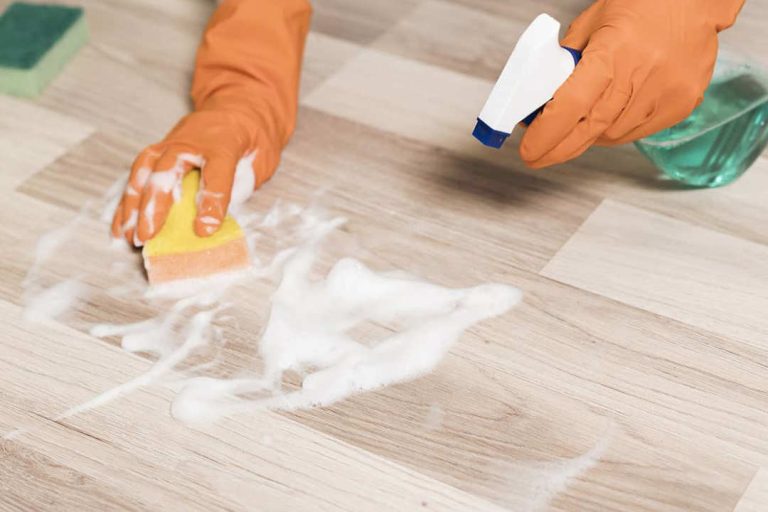Kitchen cabinets are the silent heroes of our homes, providing much-needed storage while also contributing to the overall aesthetics of the space. However, over time, they can become coated in grease and grime, making them appear dull and unattractive. In this blog post, we will explore what is the best thing to degrease kitchen cabinets to keep them looking clean and fresh.
1. Vinegar and Water Solution
One of the most popular natural cleaning solutions is a mixture of white vinegar and water. This combination is not only environmentally friendly but also incredibly effective at cutting through grease.
Simply mix equal parts vinegar and warm water in a spray bottle, then spray it onto your greasy cabinets. Allow it to sit for a few minutes before wiping it off with a soft microfiber cloth or sponge. Finish by rinsing with some clean water, then pat dry with another cloth.
2. Dish Soap and Water
Another simple yet effective way to degrease your kitchen cabinets is by using some dish soap mixed with warm water. Fill a sink or large basin with warm water, add a few drops of dish soap, and stir to create a sudsy solution. Dip a sponge or soft-bristled brush into this solution and gently scrub your cabinets’ surface. Rinse with clean water and pat dry using a clean towel or cloth.
3. Baking Soda Paste
For stubborn grease spots that need more elbow grease, try using a baking soda paste. Combine equal parts baking soda and water to form a thick paste, then apply it to the greasy areas on your cabinets using an old toothbrush or small paintbrush. Allow the paste to sit for at least 15 minutes before scrubbing it away gently with warm water and a sponge or cloth.
4. Degreasing Solutions
There are also commercial degreasing products available on the market specifically designed for cleaning kitchen cabinets. Be sure to read the label carefully and follow the manufacturer’s instructions for use. These degreasing solutions can be quite effective, but it’s important to test a small inconspicuous area of your cabinets first to ensure compatibility with your cabinet material.
5. Steam Cleaning
Another option for degreasing kitchen cabinets is using a steam cleaner. This method harnesses the power of hot steam to melt away grease and grime, making it easier to wipe clean. Steam cleaning is a chemical-free option, but it’s important to be cautious when using steam around wooden or painted surfaces, as the heat and moisture can potentially cause damage.
How Do You Clean Greasy Kitchen Cabinets and Walls?
We already know what is the best thing to degrease kitchen cabinets. But what to clean them? basically, Grease happens. Whether you’re frying a delicious meal or simply cooking up a storm, it’s almost inevitable that your kitchen cabinets and walls will eventually become coated in a layer of stubborn grease. Not only is this unsightly, but it can also attract dirt and bacteria if left unaddressed. That’s why it’s essential to know how to clean greasy kitchen cabinets and walls effectively. In this segment, we’ll explore some simple yet powerful techniques to help you conquer even the most stubborn grease buildup.
1. Use Soapy Water
The classic combination of warm water and dish soap is often the go-to solution for cutting through grease and grime on a variety of surfaces. Simply mix a few drops of your favorite dish soap with warm water in a spray bottle or bowl, apply to the greasy area using a sponge or cloth, and then gently scrub away the grease. When you’re finished, rinse with clean water to ensure no residue remains.
2. Try Vinegar
White vinegar is another fantastic option for tackling greasy surfaces in your kitchen. It’s a natural de-greaser that can break down grime without harming the finish on your cabinets or walls. To use, mix equal parts water and white vinegar in a spray bottle, generously spritz the greasy area, and let it sit for a few minutes before wiping it clean with a cloth. As an added bonus, vinegar can also help neutralize any lingering odors.
3. Baking Soda to The Rescue!
For particularly stubborn grease spots, baking soda can provide an extra bit of scrubbing power without scratching delicate surfaces like painted walls. Mix together equal parts baking soda and warm water to create a thick paste, then apply it directly onto the greasy spot using an old toothbrush or sponge. Gently scrub away the grime, rinse with clean water, and repeat as necessary until you’ve banished all traces of grease.
4. Consider Commercial Degreasers
In situations where home remedies aren’t quite cutting it, there are several commercial degreasing products available on the market that can help you dismantle even the most formidable grease deposits. When using these products, always follow the manufacturer’s instructions, taking care to protect yourself and any surrounding surfaces from potential damage. Keep in mind that many commercial degreasers are quite potent, so use them sparingly and in well-ventilated areas.
5. Prevent Future Grease Buildup
To keep your cabinets and walls looking their best, consider adopting some grease-prevention strategies in your kitchen. Use splatter guards when frying or sautéing high-fat dishes, clean up spills promptly, and make sure your kitchen is adequately ventilated to prevent stubborn grease residue from accumulating over time.
With a little elbow grease (pun intended) and the cleaning tips outlined above, you’ll have your kitchen cabinets and walls looking fresh and clean in no time. And remember — consistency is key. Keep up with regular cleaning habits to maintain a clutter-free, beautiful kitchen sanctuary for.
How Do You Remove Tough Grease?
Hope it’s now clear what is the best thing to degrease kitchen cabinets. But how do you remove tough grease?
Grease stains are an inevitable part of cooking, but that doesn’t mean they should be a permanent fixture in your kitchen. Whether it’s on your stovetop, oven, or countertops, tough grease can be stubborn and difficult to remove. However, with the right techniques and cleaning agents, you can get rid of even the most stubborn grease stains with ease.
1. Use the Right Cleaning Solution
There are several products on the market designed specifically for cutting through grease. These include degreasing sprays and dishwasher detergent. Alternatively, you can make your own solution by mixing equal parts white vinegar and water. Always test a small, inconspicuous area first to ensure it doesn’t damage the surface.
3. Soften the Grease
Before you begin scrubbing, allow the cleaning solution to work its magic. Spray or apply your chosen degreaser onto the affected area and let it sit for at least 15 minutes. This will help soften the grease, making it much easier to remove.
3. Break out The Scrubbing Tools
A microfiber cloth or a non-abrasive sponge can be used for most surfaces when it comes time to scrub away the grease. For particularly stubborn stains, using a nylon-bristle brush or an old toothbrush will provide extra scrubbing power without damaging surfaces.
4. Apply Some Elbow Grease
Now that you have softened the grease and have your scrubbing tool ready, it’s time to get to work. Apply firm pressure as you scrub in a circular motion – this will help dislodge and break down the grease buildup. Be patient and persistent, as this may take some time for particularly tough stains.
5. Rinse and Repeat if Necessary
After scrubbing vigorously, use a clean cloth or sponge dampened with warm water to wipe away any remaining residue. If the grease proves to be extra stubborn, you may need to repeat this entire process a few times to fully remove it.
6. Dry and Buff the Surface
Another important step in leaving your surfaces looking spotless is to dry them after cleaning. Use a clean, dry cloth to thoroughly dry the area and buff away any remaining streaks or residue.
7. Prevention is Key
To make your future cleaning sessions a bit easier, be mindful of how you cook and tidy up in the kitchen. Use splatter guards or lids when frying foods that release grease into the air, clean up spills as soon as they occur, and give your kitchen surfaces a regular wipe-down to prevent grease buildup.
Final Words
Regular cleaning and maintenance can prevent the buildup of grease on your kitchen cabinets and help maintain their appearance. The best method for degreasing will depend on the type of material used in your cabinets and personal preference. Whether you choose a natural solution like vinegar or a store-bought product, it’s essential always to follow the cleaning process with thorough rinsing and drying to avoid any residue or streak.
Hope you get the answer of what is the best thing to degrease kitchen cabinets. If not; write in the comments. We will try to clear up your confusion.
- How to Clean Kitchen Floor Grout Naturally: Easy DIY Methods - June 25, 2024
- How to Clean Thermoplastic Kitchen Cabinets Properly: Expert Tips - June 19, 2024
- How to Clean Mica Kitchen Cabinets: A Simple Guide - June 19, 2024






